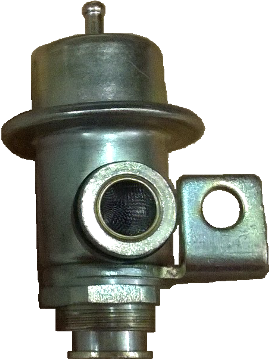 Sorry, this article is currently incomplete. We'll have this finished up soon. In the meantime, check out some other articles on Cars Simplified!
Sorry, this article is currently incomplete. We'll have this finished up soon. In the meantime, check out some other articles on Cars Simplified!
The fuel pressure regulator is a component that maintains a high enough fuel pressure for the system it supplies, be it a carburetor system (low pressure) or a fuel injection system (high pressure). The regulator allows excess pressure to flow back into the fuel tank via the fuel return line. Some fuel pressure regulators are controlled only by a spring, while others have a vacuum line feed which allows the manifold pressure to influence the fuel pressure.
Fuel Pressure Regulator Failure
Aside from getting clogged up or leaking, there are two mechanical ways a fuel pressure regulator could fail. One way is that the spring or diaphragm gets weak and allows fuel to return to the tank at too low a pressure (this will cause the engine to run lean, due to a lack of fuel). The other way is that the relief valve gets jammed in some way (which is a less common failure) and doesn't allow pressure relief, which will cause some other point on the fuel system to fail as well.
